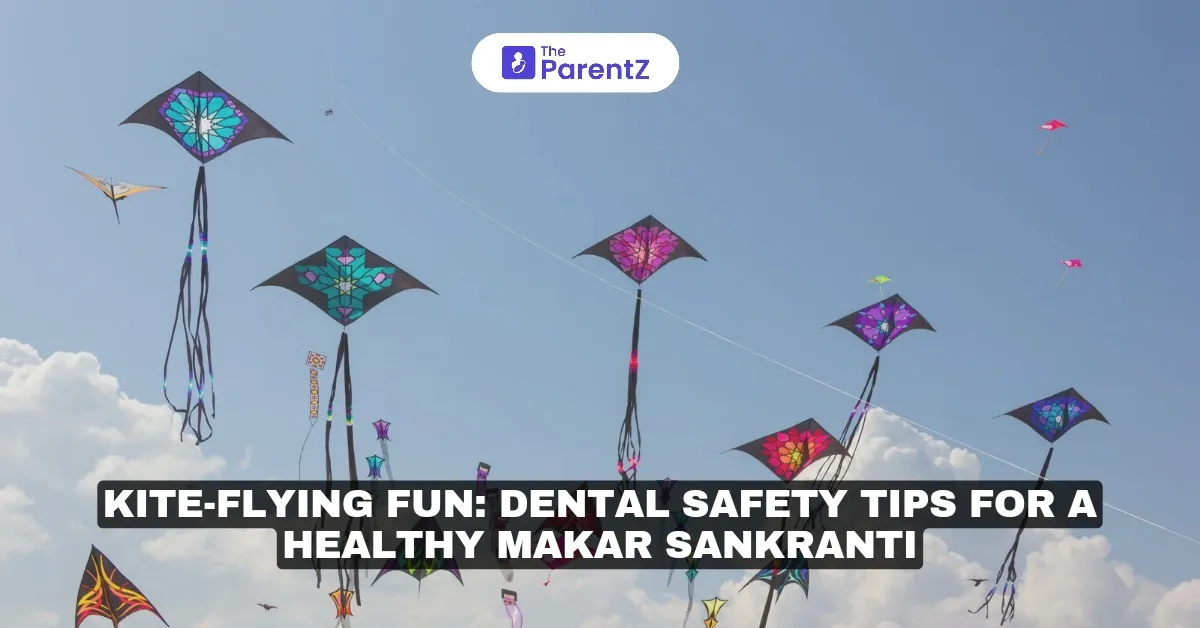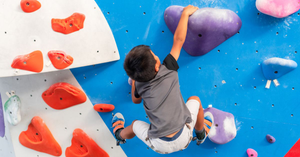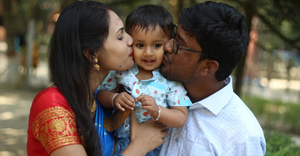Smiles, Kites, and the Need for Dental Safety
Makar Sankranti is one of the most awaited festivals in India, bringing families and friends together for a day filled with kite-flying fun. While it’s all about enjoying the sunshine, festive treats, and the thrill of seeing your kite soar high, it’s also important to stay cautious, especially when it comes to dental safety.
Kite-flying might seem like an innocent pastime, but accidents can happen, and your teeth could be at risk. From accidental falls to collisions and hard-to-bite festival snacks, protecting your teeth during this celebration is essential.
Common Dental Risks During Kite-Flying
Kite-flying is a fun outdoor activity, but it involves certain risks that can lead to dental injuries. Here are some common scenarios that could harm your teeth:
1. Accidental Falls:
Climbing up rooftops or standing on elevated surfaces while flying kites increases the risk of falls. A sudden slip or trip can result in trauma to the face and mouth, leading to broken or chipped teeth.
2. Collisions with Others:
Crowded rooftops are common during Makar Sankranti. Unexpected collisions with others while chasing a kite or turning abruptly can result in dental injuries.
3. Hard Bites on Festive Snacks:
Popular festive foods like sesame chikkis (tilgul), peanuts, and hard jaggery-based sweets, although delicious, are tough on the teeth. Biting down on hard snacks can cause fractures or cracks in teeth, especially if they are already weakened.
4. String-Related Injuries:
Kite strings, especially those coated with abrasive materials (manjha), can cause cuts on the face or mouth during kite-flying. If the string accidentally snaps back or gets entangled, it may result in injuries to the lips, gums, or teeth.
Dental Safety Tips for Makar Sankranti
1. Stay Grounded and Avoid Elevated Surfaces
Although kite-flying on rooftops is a traditional practice, it’s safer to enjoy the activity from open fields or parks. If you do choose to fly kites on rooftops, ensure there are railings and avoid standing on edges.
2. Wear a Mouthguard for Added Protection
Mouthguards are an excellent preventive tool, especially for children. Wearing a mouthguard while kite-flying can help protect teeth from accidental falls or collisions. Custom-fit mouthguards offer the best protection, but even a basic store-bought one can reduce the risk of dental trauma.
3. Avoid Hard Snacks or Eat Them with Caution
Tilgul laddoos, chikkis, and other hard festive treats can pose a risk to your teeth. If you can’t resist these delicacies, eat them slowly and avoid biting down with your front teeth. Use your molars (back teeth) to chew harder foods, as they are better equipped to handle pressure.
4. Keep Hydrated to Prevent Dry Mouth
Spending hours outdoors in the sun can lead to dehydration and dry mouth. A dry mouth reduces saliva production, which is crucial for neutralizing acids in the mouth and preventing cavities. Drink plenty of water throughout the day to stay hydrated and maintain good oral health.
5. Carry a First-Aid Kit with Dental Supplies
Accidents are unpredictable, so it’s best to be prepared. Include basic dental supplies like gauze, cotton, and a small bottle of saline or water in your first-aid kit. If someone experiences a dental injury, you can rinse the affected area with water and use gauze to control bleeding until you seek professional help.
6. Be Cautious with Kite Strings
Avoid using sharp or abrasive kite strings that could snap back and cause injuries. Choose softer, safer strings to minimize the risk of cuts and facial injuries. Encourage children to fly kites in open areas where they won’t be at risk of getting tangled in strings.
7. Avoid Using Teeth as Tools
Sometimes, in the excitement of kite-flying, people tend to use their teeth to cut strings or open packets of snacks. This habit can lead to chipping or cracking of teeth. Always keep a pair of scissors handy to avoid putting unnecessary pressure on your teeth.
What to Do in Case of a Dental Emergency
1. For a Chipped or Broken Tooth:
Rinse your mouth with warm water and apply a cold compress to reduce swelling. Save any broken pieces of the tooth and visit a dentist immediately.
2. For a Knocked-Out Tooth:
Handle the tooth by the crown (the visible part) and avoid touching the root. Rinse it gently if dirty, but do not scrub. Try placing the tooth back into its socket. If that’s not possible, store it in milk or saliva and seek immediate dental care.
3. For Cuts or Bleeding in the Mouth:
Rinse the mouth with cold water and use a clean cloth or gauze to apply pressure on the bleeding area. Seek professional help if the bleeding does not stop within 10 minutes.
Maintaining Good Oral Hygiene During the Festival
Festivals often lead to indulgence in sugary foods, which can increase the risk of cavities. To maintain good oral hygiene during Makar Sankranti:
• Brush your teeth twice a day using fluoride toothpaste.
• Rinse your mouth with water after eating sticky or sugary foods.
• Floss daily to remove food particles stuck between teeth.
• Use a mouthwash to keep your mouth fresh and free from bacteria.
Conclusion: Fly High, Stay Safe, and Keep Smiling
Makar Sankranti is a time to celebrate joy, togetherness, and the spirit of new beginnings. While you enjoy flying kites and indulging in festive treats, don’t forget to prioritize dental safety. A few simple precautions can help you avoid dental injuries and keep your smile bright throughout the festivities.
So, gear up for a fun-filled day under the sun, let your kites soar high, and remember to keep your teeth safe and healthy. Happy Makar Sankranti, and here’s to brighter smiles and safer celebrations!









Be the first one to comment on this story.